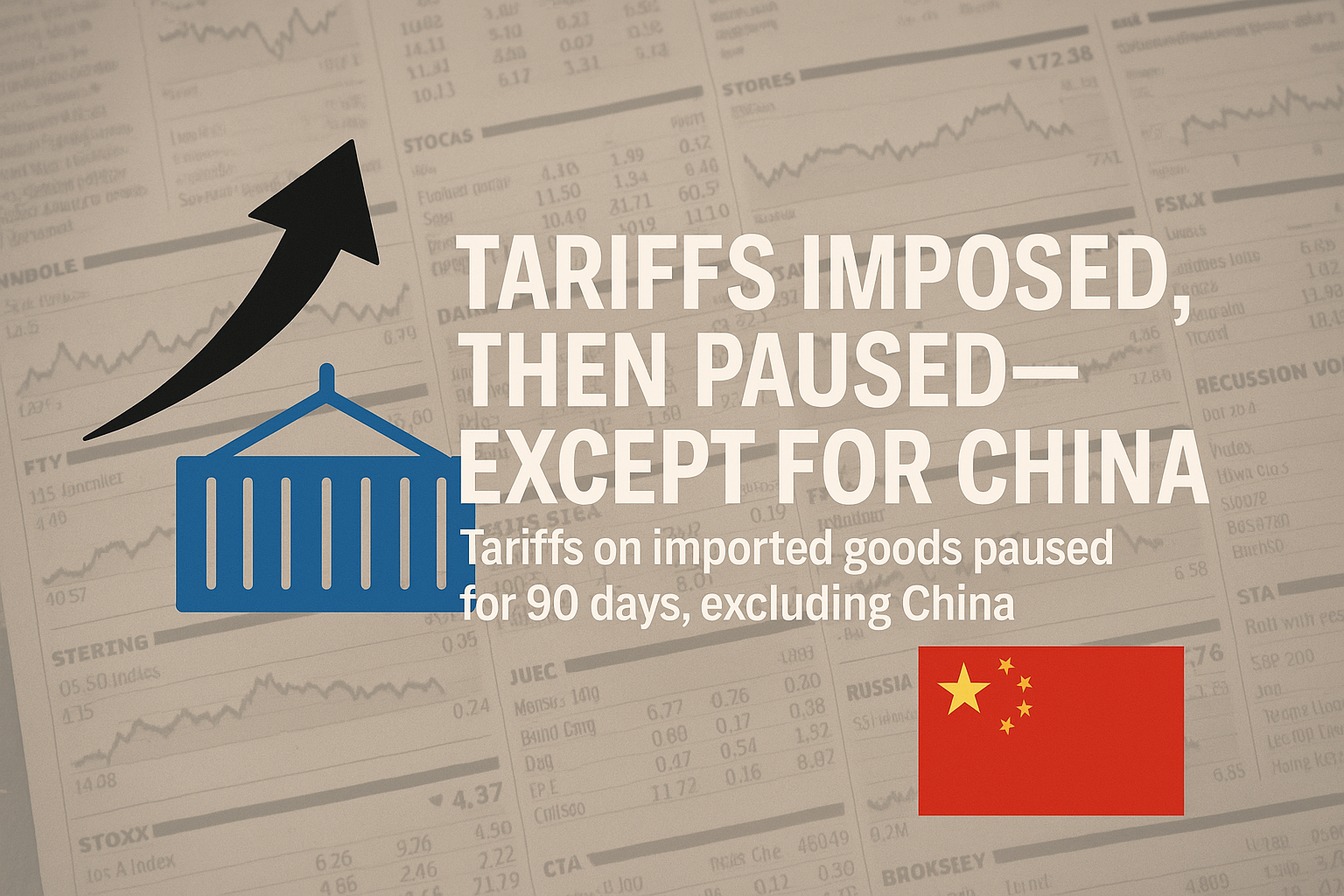New Delhi– The United States’ trade war with the world took a dramatic turn as President Donald Trump announced a partial pause on his sweeping tariff plan, delaying implementation for 90 days on imports from all countries except China. The move, revealed in a late-night Truth Social post on April 9, keeps the pressure on Beijing while offering a temporary olive branch to other trading partners amid mounting economic turbulence and international backlash.

Trump’s initial tariff salvo came on April 2, when he declared a 10% baseline tariff on all imports, with steeper duties targeting specific nations. China bore the brunt, slapped with an additional 34% tariff—bringing its total to 54% when combined with existing levies—while Canada faced 25% and the European Union 20%. Touted as “Liberation Day in America,” the policy aimed to address trade imbalances and curb drug trafficking, particularly fentanyl from China and Mexico. But the announcement sparked swift retaliation and plunged global markets into chaos.
China retaliated on April 4, imposing a matching 34% tariff on all U.S. imports effective today, April 10, alongside export controls on rare earth elements vital to tech and defense industries. Beijing’s Finance Ministry called the U.S. tariffs “economic coercion,” and the Commerce Ministry barred 11 American firms from its markets while restricting seven critical minerals. Trump upped the ante on April 7, threatening a 50% hike on Chinese goods—potentially exceeding 100%—if Beijing didn’t relent by April 9. China stood firm, vowing to “defend its sovereignty” in what analysts see as a brewing economic Cold War.
Other nations also hit back. In March, Canada imposed 25% duties on $20.7 billion in U.S. goods like orange juice, while Mexico signaled forthcoming countermeasures by April 6. The EU, eyeing retaliation, offered negotiations instead. But Trump’s latest move shifts the dynamic. In his April 9 announcement, he stated, “We’re pausing the new tariffs for 90 days—except for China, which stays on because they’re not playing fair. This gives others a chance to negotiate great deals with the USA.” The White House clarified that China’s 54% tariff remains in effect immediately, while duties on Canada, Mexico, the EU, and others are deferred until July 9, 2025.
The decision has split reactions. U.S. markets clawed back some losses, with the Dow gaining 300 points on April 10 morning trading, though analysts caution the relief may be short-lived. “Exempting everyone but China buys time, but it doesn’t defuse the bigger bomb,” said economist Diane Swonk, pointing to China’s outsized role in global supply chains. Retailers like Walmart, facing higher costs on Chinese goods, warned of price hikes, undermining Trump’s pledge to ease living costs.
China’s response was icy. State media labeled the pause a “desperate gimmick,” and officials hinted at further escalation, potentially targeting U.S. agricultural exports like soybeans—painful for Trump’s rural base. Meanwhile, Canada’s Justin Trudeau welcomed the delay but kept retaliatory tariffs in place, calling it “prudent caution.” The EU signaled openness to talks, proposing lower car tariffs as a sweetener.
The economic stakes remain high. The S&P 500’s 5% drop on April 5 marked its worst day since 2020, and JPMorgan now pegs a global recession at 60% odds by year-end, citing potential U.S. GDP losses of 0.8% even without full foreign retaliation. With no Trump-Xi call scheduled and Beijing digging in, the 90-day pause offers breathing room for some—but for China and the U.S., the tariff war is only intensifying.

